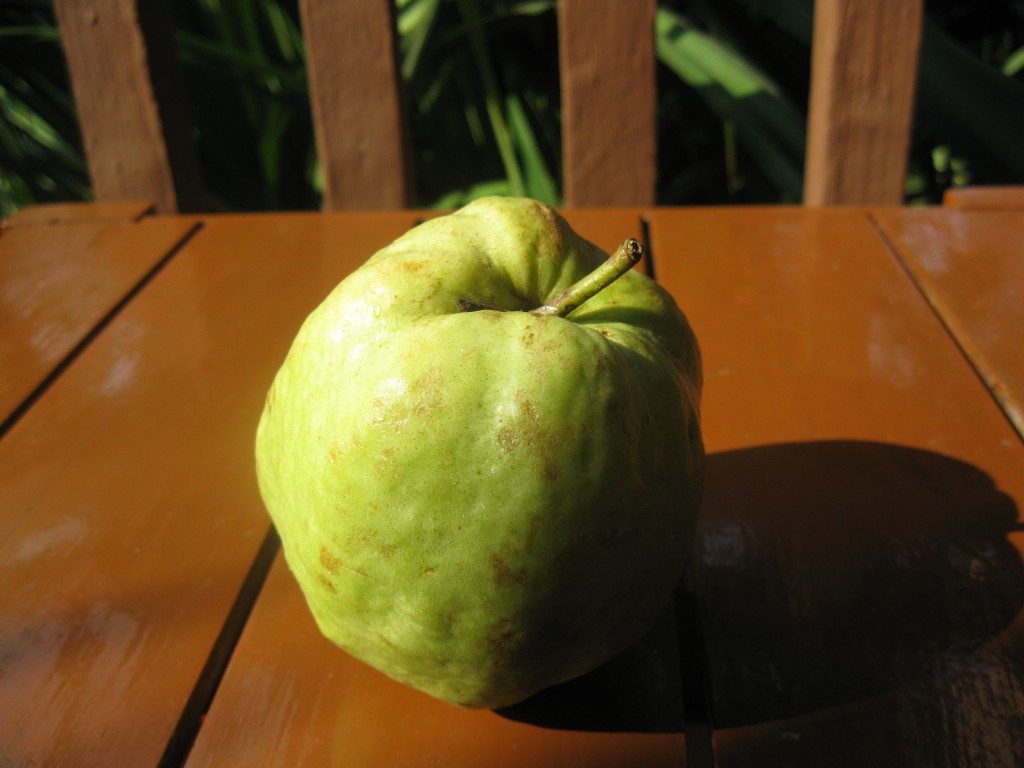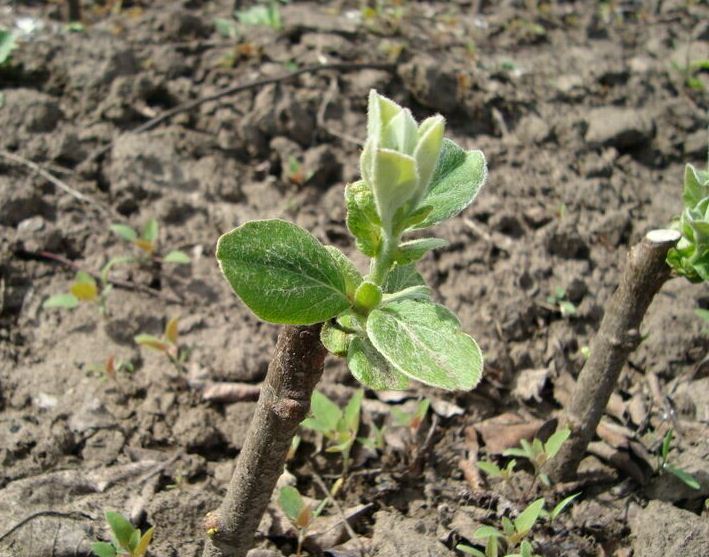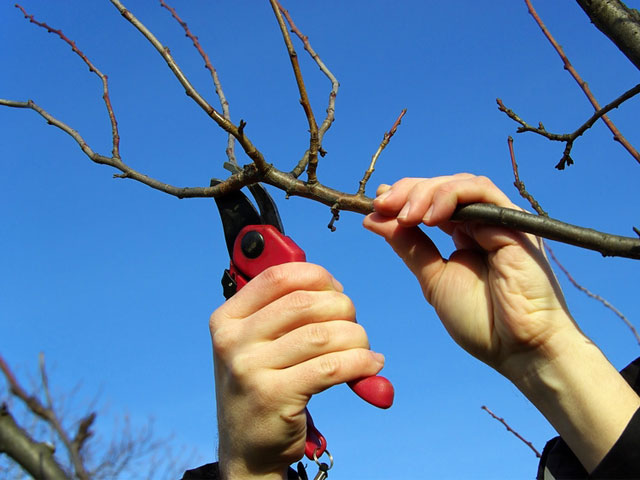Simple ways to propagate quince
Content
Seed propagation
Inside each quince fruit contains many (more than a dozen) small brown seeds, like an apple, which, unlike the latter, germinate well.  True, for this, before planting, they must be subjected to a long (up to 2 months) stratification - keeping in the cold. Planting seeds for seedlings can be done in spring or autumn. Autumn planting is preferable for several reasons:
True, for this, before planting, they must be subjected to a long (up to 2 months) stratification - keeping in the cold. Planting seeds for seedlings can be done in spring or autumn. Autumn planting is preferable for several reasons:
- allows sowing seeds without stratification - during the winter this process will take place in natural conditions;
- by the time of germination, in spring, the plants will already have sufficiently developed roots;
- the emerged seedlings will be strong and healthy (only high-quality seed is able to withstand natural winter conditions), and therefore the trees will grow strong and well-bearing.
Planting seeds in the fall is carried out immediately in open ground around the end of October. You should not immediately get the seeds out of the fruit, let the quince, after being removed from the tree, lie down for 1 month, ripen, and the seeds will become dense and brown. After that, they are removed from the fruit, washed from mucus and pulp, and slightly dried for autumn planting. If planting is planned in the spring, then the seeds must be well dried and stored in a linen bag until sowing.
When planting in spring, the material is necessarily subjected to 2-3 months of stratification, which for sowing in pots begins in December, and for sowing in open ground - in February. February seeds will be ready for planting in late April - early May. If you want to have germinated seedlings in the spring, then it is advisable to start sowing in the middle of winter in peat pots.
Stratification of quince seeds is not just keeping them in the cold, but also in a moist sandy substrate. Before starting stratification, the seeds must be soaked for 5-6 hours in warm water.
Then take coarse river sand (3 parts of sand for 1 part of seeds), rinse it well, dry it a little. The sand in which the seeds will be placed should be moderately moist. Pour the prepared substrate into boxes, mix with seeds, and place in a cool place where the constant temperature is kept at 3-4 ° C. Stir the sand mixture once a week.
Stratified seeds are sown in pots, containers or open ground. The seedlings require nutrients to germinate effectively. If you sow seeds directly into the soil, then you should take care of its fertility. In the soil with insufficient humus, it is necessary to add compost or rotted manure (6-8 kg / 1 sq. M), dig up and level. In the prepared bed, make grooves 3 cm deep at a distance of 20 cm from each other, and sow seeds at the rate of 70-100 pieces per 1 running meter. Then cover the furrows with earth, and water the crops well. When the seedlings appear and get a little stronger, they are thinned out, leaving a distance of 8-10 cm between the plants.
When planting seeds in a pot, you can prepare the soil yourself, or buy a ready-made substrate. 2-4 seeds are planted in each pot (quince germination rate is 50%). The soil mixture, consisting of peat, dries quickly, so it is necessary to monitor the maintenance of moisture. Seedlings grown in pots must be hardened before planting in the ground. Transplanting from a pot is carried out no earlier than 5-6 true leaves are formed in the seedling. After planting in open ground, young seedlings are grown for another 1.5-2 years, and only after that they are transplanted to a permanent place.
Video "Reproduction"
From the video you will learn how to propagate fruit trees.
Propagation by cuttings
Cuttings are used when it is necessary to preserve all the varietal characteristics of the mother plant. For example, decorative Japanese quince with beautiful double flowers is often propagated in this way, when reproduction of which one so wants to preserve these varietal characteristics. Growing quince cuttings is a fairly effective way to achieve high rooting. Planting material can be planted anywhere: in greenhouses, greenhouses, open field or pots. In any case, subject to the technology, the cuttings successfully take root within a month, after which they can be transplanted to the desired place.
For harvesting cuttings, young green shoots are often used, less often woody ones. You can apply branches after pruning, or young root shoots. The survival rate of cuttings depends on many factors: the quality of the planting material, soil moisture and temperature, and other external and natural factors. As for the quality of the cuttings, they should be cut correctly. Each piece 15-20 cm long (4-5 buds) is cut with a sharp secateurs. The lower cut is made at an acute angle below the kidney, and the upper cut is made above the kidney.
Before the blanks are planted in a moist substrate, they must be placed in a solution that stimulates root formation for a day. Then, at a slight slope, bury it in a pre-moistened soil consisting of sand and peat in a 3: 1 ratio. If the seedlings are not grown in a greenhouse, then for the first time it is better to cover them with transparent material, for example, a cut-off plastic bottle - this will help maintain the desired humidity and temperature. After buds are formed and germinated on the cuttings, the rooting process can be considered successful. Transplanting seedlings to a permanent place is carried out the next year, and fruiting is possible for 3-4 years of the tree's life.
With the help of root suckers
Root offspring are nothing more than the growth that the tree regularly produces. Growing to a certain size (height 12-15 cm and thickness 0.5-1 cm), it becomes full-fledged seedlings that can be separated from the mother bush and transplanted to a permanent place of growth. Reproduction of quince by offspring is considered the easiest and not laborious way, since the gardener only needs to separate the seedlings and transplant them. A significant advantage is the fact that such plants quickly and almost 100% take root, because they already have developed roots.
It is possible to plant offspring from the mother bush both in spring and in autumn, however, spring planting is desirable for a cold climate.
Technically, it is very simple to do this: you need to separate the offspring, trying not to damage the root system, then plant them in pre-prepared planting holes at a distance of 1-1.5 m (depending on the variety).
After planting, the seedlings should be well watered and mulched with organic material. Until they take root in a new place and do not grow, it is necessary to maintain constant soil moisture.
Root propagation video
From the video you will learn how to reproduce a tree using root suckers.



